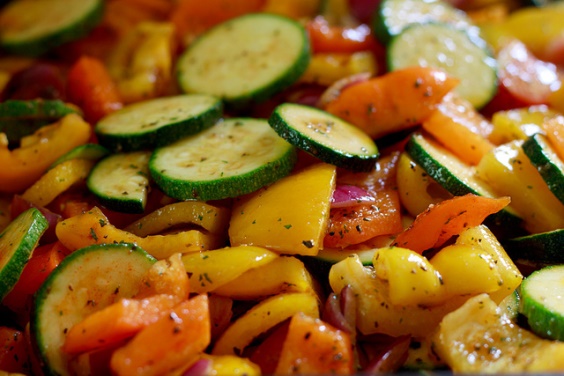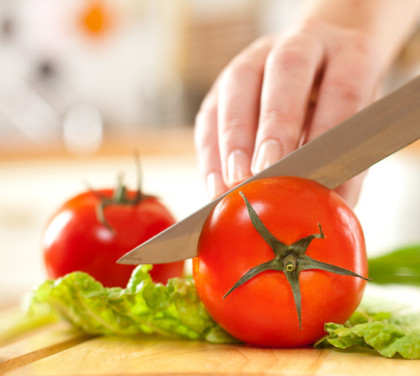
Humans are innately drawn to the rich savory flavor of umami. People are generally not, however, drawn to the bitter taste of vegetables. So, making vegetable dishes more savory and thus more appealing seems like a no-brainer.
Parents have been inadvertently doing this for years every time they added cheese to their kids’ broccoli. Here are several other more sophisticated, tried and true methods to boost the umami in your vegetables and finally get compliments on your Brussel sprouts.
Add umami-rich foods
Cheese isn’t the only thing you can add to make vegetable dishes more savory. Pieces of aged meats cooked with the vegetables will release their free glutamate – the amino acid responsible for umami flavor – increasing the savory-ness of the dish. This is why cooks often add chunks of ham to green beans or bacon to Brussel sprouts.
 Adding tomatoes, mushrooms or potatoes, all of which are naturally savory, to your other vegetables will also increase the overall umami of the dish. The riper the vegetables are, the more savory they will be. And, leaving the seeds in the tomatoes will boost the umami flavor.
Adding tomatoes, mushrooms or potatoes, all of which are naturally savory, to your other vegetables will also increase the overall umami of the dish. The riper the vegetables are, the more savory they will be. And, leaving the seeds in the tomatoes will boost the umami flavor.
And, if you do use cheese to add umami flavor, cheeses that are aged longer will have more free glutamate and therefore more savory flavor than younger cheeses.
Use “super salt” (MSG and salt combo)
This combination of MSG and salt adds that “I can’t put my finger on what it is, but I want to keep eating this” factor to your food. To make it, mix 1/10 MSG with 9/10 salt in a spice shaker. Use it to season your vegetable dishes while cooking just as you would with regular salt. Of course, you can always use plain MSG (monosodium glutamate) to season your food instead. You can find it in the grocery under the brand names of Ajinomoto® or Accent®.
Add umami-rich sauces
Use umami-rich sauces like soy sauce, miso paste or fish paste/sauce when cooking, and your vegetable dishes will be decidedly more flavorful. Adding as little as one tablespoon of one of these will make your dish more savory and complex. This technique can be used for Asian and non-Asian dishes alike. And if the thought of fish sauce makes you wince, try Worcestershire sauce instead; it’s a fish sauce that doesn’t taste fishy.
Nervous about trying some of this on your own? Check out these savory vegetable recipes that are sure to please: Ginger Miso Glazed Eggplant, Butternut Squash Shiitake Ragout, and Garlic Marinated Mushrooms.
What are your favorite ways to make your vegetable dishes more savory? (comment below)

